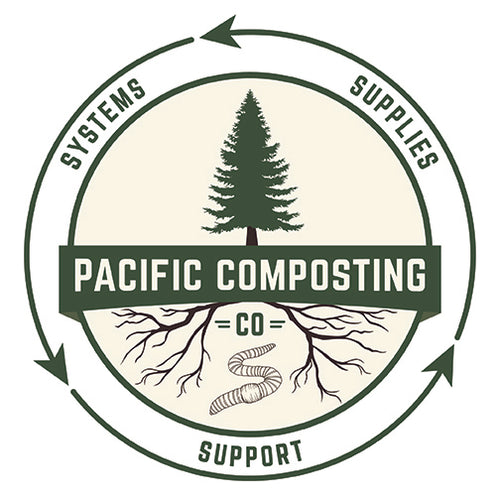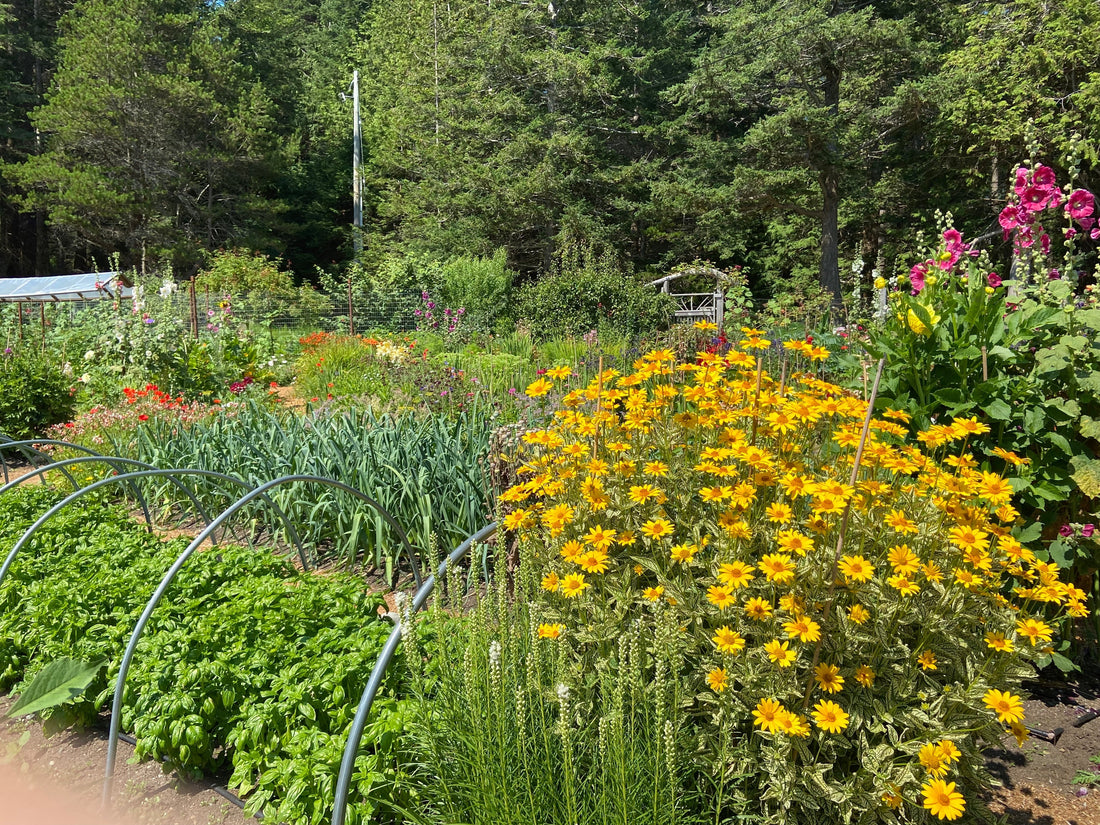This is Part I of a 2-part backyard vermicomposting series. Be sure to also check out Part II: Outdoor Vermicomposting 101.
Something a lot of people wonder about is whether or not composting worms (such as Red Wigglers) can be added straight into garden soil - the idea being that they might boost the fertility of the soil via their activities, similar to regular earthworms.
The answer is yes and no. Yes, composting worms can be used effectively in gardens, but no, they shouldn't ever just be dumped in the soil. Red Worms (and other composting species) require a lot of rich organic matter in order to truly thrive. This is something even rich soil won’t have enough of to really support them properly. The moisture content of garden soil also tends to fluctuate too widely for composting worms, which do best with a consistently damp environment.
The fact is, if you add Red Worms to your gardens or (even worse) dump them on your lawn, they will more than likely attempt to move away to a more favourable location (eg. nearby composting system).
In Part II of this series, we’ll look at some potential systems that can help you harness the power of composting worms in your gardens (and in your yard in general). Likely the easiest, and maybe even the most effective, option would be something like in-ground bucket systems. You're able to provide the worms with a habitat containing plenty of rich organic matter - but it's still small enough that you can easily place it in a garden bed. Win/win!
—
Before we get to the topic of systems, though, we need to address an important elephant in the room - the topic of “invasive earthworms”. Understandably, many people worry about the potential for composting worms used in outdoor systems to escape and cause harm in local ecosystems.
Overall, invasive earthworms are a valid concern, with plenty of academic research findings to suggest that there are species having a negative impact in many parts of North America, especially in regions where few or no earthworms were previously present.
Mainstream media has certainly added fuel to the fire in recent years. Here is just a small handful of the sort of headlines used to draw in readers:
-
Invasive earthworms are remaking our forests, and climate scientists are worried (CBC)
-
The Trouble with Earthworms (NPR)
-
'The aliens to watch': how the humble earthworm is altering the Arctic (The Guardian)
- Cancel Earthworms (The Atlantic)

Naturally, this type of (at times, over-the-top) reporting has led a lot of people to assume that composting earthworms, such as Red (Wiggler) Worms (Eisenia fetida/andrei) pose a major threat too.
Well, the good news for us vermicomposters is that, upon closer inspection of most “invasive earthworms” articles - and especially once you dig deeper into the actual academic literature on the topic - a different story emerges.
It is extremely rare for composting species to be directly implicated in actual damage to natural ecosystems - and there are very valid reasons for that!
- Composting worms are adapted to thrive in environments where there are high concentrations of very rich organic matter - not natural environments where high C:N food sources, such as fallen leaves and woody debris, tend to dominate. This helps to explain why thriving “wild” populations of composting worms are mostly found in livestock manure heaps and other rich organic waste deposits closely associated with human activity (e.g. urban composting systems).
- It’s also worth noting that temperature can be a limiting factor in colder regions. Red Worms are “epigeic” worms - meaning they are often found up above the soil surface in organic matter. These types of habitats are far more exposed, and in many locations with significant winters, this can result in them dying off (the good news is that with some fairly basic extra steps taken, it can be quite easy to help them survive in outdoor composting systems in many parts of Canada).
—
The earthworms most commonly found to have a negative impact on natural environments in North America are species of the genera Lumbricus and Amynthas. The latter - commonly referred to as “jumpers”, “crazy worms” and “snake worms” - are particularly concerning, due to how quickly they seem to be expanding their range, and just how voracious their appetite is for organic matter.
Both of these groups of worms can find their way into outdoor composting systems, if they happen to already be in the area, but it is unlikely you will ever end up with any mixed in with composting worms purchased from a reputable supplier (just based on how composting worms are typically raised).
Some of Our Own Observations

We recently (at the time of writing) conducted an informal experiment to determine if we could get a thriving Red Wiggler population established in heaps of woody mulch. This type of high-carbon organic matter is much closer to the typical “food” earthworms would rely on in a natural setting, but we still wanted to give them a bit of an unfair advantage by actually boosting the nutrition of the habitat with various nitrogen-rich wastes, such as grass clippings, comfrey and food scraps.
Several months later, the mulch below the surface of the heaps looked and smelled incredible! A lot of rotting had already taken place - with plenty of visible fungal growth - and it was much darker in colour. It’s safe to say this stuff would have been great to add as a living material to vermicomposting systems!
And the thriving Red Worm population?
It just never happened. Even in the heap that was set up directly in front of backyard composters with existing Red Worm colonies.
Yet these nutritionally-boosted wood chip habitats are absolutely loaded with Lumbricus sp. worms. We conducted a quick worm count in the habitat and found close to 40 Lumbricus worms, and 2 other soil worms, before we finally found a single Red Wiggler!
—
We’ve certainly found Red Worms in different areas outside of our composting systems many times over the years, but the only places we’ve found them in high abundance, actually thriving, are in composting systems and rich deposits of organic matter (such as manure heaps).
How to Tell Lumbricus Worms Apart From Red Wigglers
Developing some basic earthworm-ID skills can be valuable for identifying some of the common varieties in your outdoor systems, and helping to avoid transfer of unwanted invasives to other areas. The good news is that Lumbricus sp worms have some key characteristics that make them relatively easy to distinguish from Red Worms and other common composting species.
Coloration
Lumbricus sp tend to have much duller, uniform coloration than Red Worms. They are often brownish or somewhat reddish (in case of Lumbricus rubellus) in the head region, and more of a pale beige to pinkish in the lower half. Red Worms, on the other hand, tend to have brighter coloration and distinct striping on at least part of their body. If you are seeing obvious red/orange/yellow coloration and stripes anywhere on the body, it is highly unlikely you have a Lumbricus sp.
Tail
This is a very important feature to examine, since the tail tip of Lumbricus worms can be a very easy way to tell them apart from other earthworm varieties. They are known for their flattened, often spade-shaped tail tips (sometimes referred to as a “beaver tail”) - most obvious when they are sitting in one spot (when the worm is in motion, this feature isn’t nearly as easy to see).

This is likely the most reliable way to tell Lumbricus worms apart from Red Worms, since the latter will always have a more cylindrical, tapered tail - with some striping, and some yellowish coloration (see next image).

Temperature Tolerance
Lumbricus worms prefer cooler temperatures than Red Worms, so you will likely find them further down in outdoor composting systems (at least during warmer times of year), and if you do end up with some in your indoor systems, you may notice them hanging out up near the surface or close to the outer walls of the bin, where there tends to be cooler temps.
Final Thoughts
Scientists believe that most, if not all earthworms in North America are in fact “non-native”, thanks to the last ice age. Many varieties, including Red Wigglers, European Nightcrawlers, and Lumbricus species were brought over from the European continent.
But here’s the thing…
Native or not - and as talented as they are at being able to survive in a wide-range of environments and conditions - in order for Red Worms to truly thrive, they need plenty of rich organic wastes. In other words, they are far more likely to hang out in any active composting systems you have set up, than they are to roam off and start ruining the environment.
—
Be sure to also check out Part II in this series: Outdoor Vermicomposting 101!
Helpful Related Resources
Fall - A Great Time to Get Your Backyard Composter Going!
What Is “Living Material”?
Bedding - The Most Important Material in Your Worm Bin?
The Plastia In-Ground Worm Composter
DIY In-Ground Worm Composter
Recommended Products
Red Wigglers
Urbalive In-Ground Worm Composter
GeoBin
pH Buffer Grit
EM Concentrate

